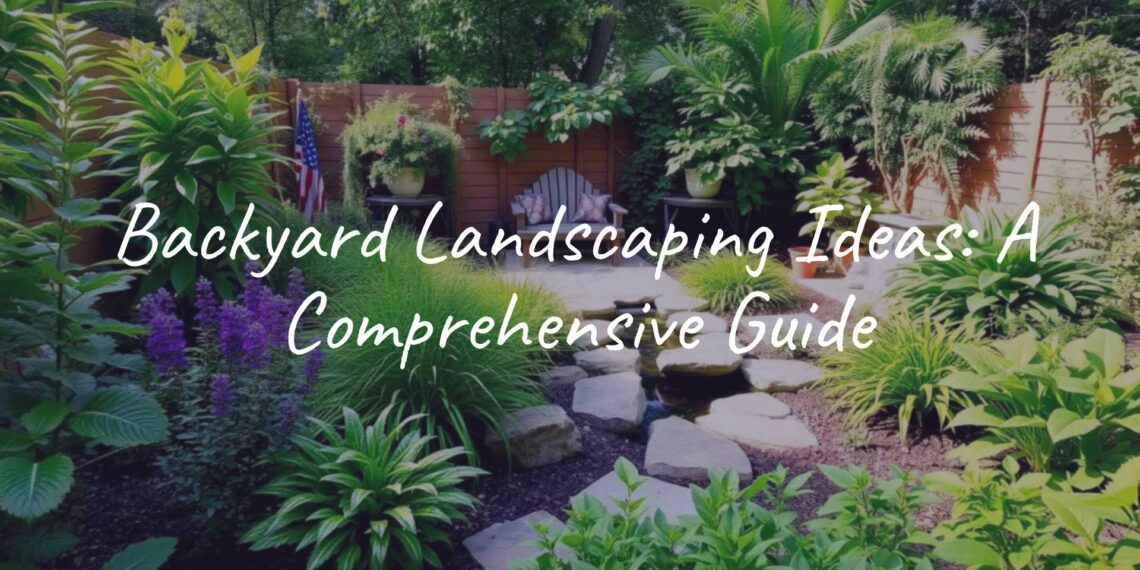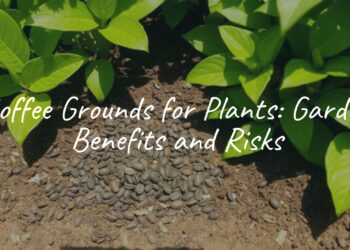Backyard landscaping ideas are plans for turning your outdoor area into an extra living space, a calm hideaway, or a lively spot for gatherings. They cover everything from picking plants and hardscape materials to adding useful and good-looking features that fit your routine and your lot. The aim is to build a space that looks great and works well, fitted to your needs and wants. Whether you want a quiet place to relax or a space for parties, smart landscaping can make it happen.
There are more than 100,506 photos of backyard landscaping ideas and designs to spark ideas, showing how many ways there are to shape a yard. From sleek modern looks to cozy cottage gardens, you can do almost anything. The key is knowing what makes a backyard work and how to mix parts to get the result you want.
What Are Backyard Landscaping Ideas?
Backyard landscaping ideas are creative and practical ways to plan and build the space behind your home. These ideas blend natural parts like plants, trees, and water with built features like patios, paths, and seating. The goal is a connected, welcoming space that matches your home and fits your taste and daily needs. It brings order and purpose to your outdoor area so it feels as useful and inviting as any room indoors.
Projects can be simple DIY, like edging a bed or planting containers, or full makeovers with a pro landscaper. Backyard landscaping is flexible; it can be bold or simple, always reflecting your style and budget. Your choices can raise curb appeal and value, while making an outdoor haven that is both pretty and practical.
Why Consider Landscaping for Your Backyard?
Landscaping your backyard is about making the most of your property. A well-planned yard can lift your home’s look, create a strong first impression, and boost curb appeal. Imagine stepping outside into a space that feels like part of your home-comfortable, attractive, and useful. This change can shape your daily life, giving you a peaceful spot or a lively place to host friends.
It also adds real benefits. Good landscaping can raise your home’s value, carve out areas for rest, play, and dining, and support the environment with smart, low-water choices. A flower bed adds color and scent, a fire pit draws people together, and a water feature brings calm sound. You can suit the yard to your lifestyle, making spaces for kids to run or quiet corners for reading and reflection.
Which Elements Define a Well-Landscaped Backyard?
A strong backyard plan blends parts that work together for beauty, comfort, and ease of use. It balances softscape and hardscape. Softscape is the living side: plants, flowers, shrubs, and trees chosen for your climate and for color, texture, and scent. A cottage look might use paths edged with bright perennials. A modern yard might feature succulents and low-water plants.
Hardscape is the built side: patios, decks, pergolas, paths, walls, and fire pits. These shape the layout, create routes, and set places for dining and lounging. Bluestone or brick can make elegant patios. A steel patio cover adds shade and style. Water-ponds, fountains, or falls-adds sound and calm. Lighting, from tree uplights to string lights, extends time outdoors after dark. In the end, each part should fit together so the whole yard feels connected and easy to enjoy.

What Factors Should Influence Your Backyard Landscaping Plans?
Starting a backyard project works best with a clear plan. A few key points guide good choices so the result looks good and works day to day. Skipping them can lead to extra cost, higher upkeep, or a yard that misses the mark.
Think about your lot, climate, how you’ll use the space, maintenance time, and budget. Knowing these early can save time and help you build a yard you’ll love for years.
- Yard size and shape
- Climate, sun, soil, and water limits
- Main uses: relax, play, entertain, grow food
- Maintenance time and interest
- Budget and timeline
What Is the Size and Shape of Your Backyard?
Size and shape set the limits for what you can do. Small yards call for smart moves: use height with trellises, vertical gardens, and hanging baskets to add green without taking floor space. Pick a bistro set over a full dining set to keep it open. Choose stepping stones instead of wide walks to keep things light.
Large yards can hold many zones: big patios, kids’ areas, veggie beds, even sport courts. Structures help define spaces. If you have mature trees, use small level changes and contrasting shapes to guide the eye. Start by measuring your yard so you know both options and limits.
How Does Your Climate Impact Plant and Feature Choices?
Climate strongly shapes plant lists and features. If you’re in a hot or dry area, go with low-water ideas-native plants and succulents thrive with little irrigation and support local life. Places like Southern California often use a light plant palette and gravel to hold moisture.
Rainy regions with partial sun fit shade-loving perennials, ground covers, or lush lawns. Sun exposure-full, partial, or shade-decides what grows well. Plan for seasonal interest with bloom times, foliage color, bark, or berries so your yard looks good all year. Pick plants that fit your sun and soil for healthy growth and a lasting design.
What Is Your Intended Use for the Space?
How you plan to use the yard should guide every choice. Picture your daily life. Do you want quiet reading spots, or a party space with an outdoor kitchen and dining area? Do you need a kids’ play zone, a dog run, or a pool?
Rank your activities to assign space and pick features that fit your life. With young kids, a lawn, swings, or a pool may be high on the list. For hosting, think pool and patio, a deck with a fire pit, a grill, and outdoor kitchen. Sports fans might add a half court. Clear priorities lead to a yard that looks good and fits your routine, which can also boost resale.
How Much Maintenance Are You Willing to Perform?
Maintenance is a key factor many people forget. A pretty yard can become a chore if it needs more time than you want to give. If you enjoy gardening, big rose beds or veggie plots can be great. If you want less upkeep, choose low-care succulents, shrubs, or hedges.
Low-care options include ground covers, artificial turf, containers, native plants, and xeriscaping. Gravel, rocks, and stone are budget-friendly and low upkeep. When you browse ideas, keep your care level in mind. For complex yards, hiring help for mowing or weeding can keep things neat without taking over your weekends.
What Budget Should You Set for Backyard Landscaping?
Set a clear budget before you start. Costs range from low DIY projects to high-end, pro-built plans. Use rough tiers to guide choices.
| Cost tier | Typical features |
|---|---|
| $ | Grass, gravel paths, simple water bowls, basic wood fences, stone borders |
| $$ | Paver patios, modest lighting, prefab fire pits, young trees and shrubs |
| $$$ | Custom pergolas, built-in grill, irrigation, larger specimen plants |
| $$$$ | Pools, outdoor kitchens, full lighting plans, major grade work |
To save, use perennial ground covers instead of mulch or sod, and buy young plants to let them grow in place. Check garage sales for furniture to refinish. Gravel, rocks, and stone are low-cost and low-care. For big jobs, get a few quotes and compare lower-cost material options that still last. You can also build in phases to spread costs.
Backyard Landscaping Ideas for Different Spaces and Styles
The best part of backyard design is how flexible it is. You can shape small city yards or big suburban lots to fit your space and taste. Work with your yard’s size and your style to build an outdoor area that feels like your own.
Whether you like clean modern looks or rustic charm, there’s a path that fits. Below are ways to use space well, set zones, build privacy, follow popular styles, and use green practices.
Small Backyard Solutions for Maximum Impact
Even tiny yards can become inviting and useful. Use design that makes the most of every inch and makes the space feel bigger. Go vertical with trellises, arbors, and wall gardens to draw the eye up. Train vines on fences or walls to add green and privacy.
Wood decking warms a small yard and sets a clear spot for dining and lounging. Try built-in L-shaped benches with storage, or a raised deck that frames seating. Swap big lawns for neat paths, pocket patios, or a small rock garden with rows of succulents. Simple lighting-swagged string lights or pendant lamps-creates a “ceiling” after dark, making it feel larger and cozy. Even a small birdbath or tabletop fountain fits in tight spaces.
Large Backyard Designs for Versatile Living
Big yards can host many “rooms” with different moods. Picture a broad deck for meals, a fire pit circle for evenings, and a lawn for games or picnics. Multiple spots let people spread out and enjoy the space together.
Structures help shape big spaces. Retaining walls can terrace slopes, adding levels and interest. Pergolas and pavilions add shade and define outdoor rooms. Use paths-flagstone or gravel-to link zones. Large yards can also hold outdoor kitchens, pools, or sport courts. Aim for flow so each area feels linked to the next.

Creating Zones for Relaxation, Play, and Entertaining
Clear zones make a yard work better. For rest, set up a quiet corner with a couch and stone fireplace, or a bench tucked into plantings. A hammock or swing bed under a pergola adds a calm place to lounge, with tall shrubs for privacy.
For play, plan a lawn for games, a hopscotch circle, an outdoor chalkboard, or a combo shed/tree house. Add a trampoline or tumble mat if you like. For hosting, think a built-in grill with bar, a dining area under a pergola with breezy curtains, or a fire pit with tiered seating. Link zones with paths or subtle changes in materials so the yard feels connected.
How to Achieve Privacy in the Backyard
Privacy makes an outdoor space feel comfortable, especially near close neighbors. Use a mix of tactics to block views and create a cozy feel. Planting is a natural choice: tall hedges, layered trees and shrubs, and perennial grasses can make living screens that absorb noise and hide views.
Fences also help. An 8ft Western Red Cedar board-on-board fence gives strong screening. You can also use open fences with climbing roses or vines to keep some sight lines while separating spaces. Pergolas and arbors define overhead space and give vines a place to grow. For quick fixes, try freestanding screens, outdoor curtains, or rows of tall planters. Combine ideas to fit your yard and style.
Trending Backyard Styles: Modern, Cottage, Mediterranean, and Rustic
Styles shape the mood of your yard. Here are four popular looks and their common features:
| Style | Key features |
|---|---|
| Modern | Straight lines, simple planting, large pavers, rectangular pools, limited color palette, gravel gardens |
| Cottage | Curved paths, masses of perennials (iris, alliums, echinacea, roses, foxglove), long bloom season, informal layout |
| Rustic | Reclaimed wood, stone, boulder seating, gravel patios, earthy textures, outdoor kitchens with a handmade feel |
| Mediterranean | Low-water plants, layered heights, rustic water features, herb beds, old brick or stone patios |
Mix and match to suit your taste-many yards blend elements from more than one style.
Incorporating Sustainable and Eco-Friendly Landscaping
Eco-wise landscaping helps the planet and can lower costs. Pick plants, materials, and water plans that use fewer resources. Low-water plants cut irrigation. Native plants fit local weather and soil, need less care, and support birds and pollinators.
Use permeable pavers and gravel so rain can soak in, and add rain barrels to collect water for later. Try low-care perennial borders, sheds with green roofs, or repurposed finds. Adding clover seed to a lawn supports pollinators. With these steps, your yard can look great and thrive with less input.
Which Plants Work Best for Backyard Landscaping?
Plant choice can make or break a yard. Plants bring color, texture, scent, and life. The best picks depend on your climate, soil, style, and how much care you want to give. A good mix can keep interest year-round, add privacy, and even feed your family.
Below are popular picks, low-care options, ways to keep bloom going, and ideas for growing food in your yard.
Popular Shrubs, Flowers, and Trees for Backyard Design
Balance shrubs, flowers, and trees for structure and long-term appeal. For shrubs, hydrangeas give big blooms, and evergreens add year-round form and color. Climbing roses bring romance over arbors and fences, bridging ground covers and taller trees.
For flowers, perennials like iris, alliums, echinacea, and hostas return each year and add texture. Annuals give season-long color and are easy to swap. Trees can cast dappled shade for comfy seating. Young birch trees fit a clean, modern look. Fruit trees-apple, pear, lime, lemon-add beauty and food. Choose plants that match your climate and soil, and layer heights and shapes for depth.
Low-Maintenance and Drought-Tolerant Plant Options
If you want beauty with less work, focus on low-care, low-water plants. Succulents come in many forms, love dry spots, and suit rock gardens, pots, and ground cover.
Native plants are built for your area, often needing less water and care. Clumping grasses and evergreen shrubs give year-round interest with little fuss. Ground covers like creeping sedum or creeping thyme soften paths and reduce the need for mulch or sod. Many shrubs-like ninebark, amsonia, fothergilla, and spirea-offer color with modest upkeep.
How to Incorporate Perennials and Annuals for Year-Round Appeal
Mix perennials and annuals to keep the show going. Perennials are the backbone, returning each year with varied bloom times and textures-hostas, hydrangeas, iris, and echinacea are classics. Build a mix so something is blooming from spring through fall.
Annuals bring bold, steady color for one season. Use them to fill gaps, try new tones, or refresh areas fast. Plant them in pots, baskets, and window boxes for easy moves and quick updates. This combo keeps interest rolling all year.
Edible Gardens: Can You Grow Vegetables and Herbs in Your Backyard?
Yes. Growing veggies and herbs adds beauty and fresh food. A kitchen garden beside apple trees can supply herbs for cooking, with nearby beds for vegetables, citrus, and tropical plants mixed with perennials.
Small yards can do this too. Raised beds (cedar is a good choice) make soil better and gardening easier. Wood chip paths add charm, and a Critterfence can keep pests out without spoiling the look. Plant pollinator-friendly perennials nearby to bring helpful insects. An edible garden looks good and fills your table.
How to Add Features and Structures to Improve Your Backyard
Plants are only part of the plan. Features and structures add function, define zones, and lift the look. From patios to water elements, these pieces help you build a space that fits your needs and style while boosting appeal.
Below are options for dining, lighting, water, and more-plus how to place them for the best day-to-day use.
Should You Include Patios, Decks, or Pergolas?
Patios-made from bluestone, concrete, natural stone, or brick-give a solid base for dining and lounging. Let ground cover grow between pavers to soften the look. Even a basic concrete pad can feel inviting with a simple stair and a two-tone pergola.
Decks, often cedar, add raised platforms that split a yard into rooms, great on slopes. A two-level deck can handle dining and relaxing. Pergolas (wood or metal) add shade and frame outdoor rooms. They can mark entries and support vines for a green passage. A round metal pergola with wisteria or a sleek steel cover can be a striking focal point, balancing straight walls with soft curves.
Water Features: Ponds, Fountains, and Waterfalls
Water features look great and bring soothing sound that masks city noise. They can be small or grand to fit your space.
Ponds invite wildlife and add a natural feel; some designs even include floating stone patios. Fountains bring a sculptural touch. A split-level fountain can create a gentle brook sound in a compact footprint with low upkeep. Waterfalls work well on slopes or in terraced gardens, sending water over steps for movement and sound. Even tight yards can fit a birdbath or tabletop fountain.
What Are the Benefits of Backyard Fire Pits and Fireplaces?
Fire pits and outdoor fireplaces draw people together and become the heart of your yard. The glow and warmth extend outdoor time on cool nights and across seasons. They turn a simple space into a destination.
A fire pit-anything from a metal bowl to a built pit with tiered seating-makes an instant gathering spot on decks, near pools, or in clearings. Outdoor fireplaces feel more permanent and can host TVs or pizza ovens. Beyond gathering people, fire features add style and can lift perceived value. They create comfort and encourage longer visits outdoors.
Outdoor Kitchens, Grills, and Dining Spaces
To make your yard a true living space, add cooking and dining areas. This can be a built-in grill with counter space or a full setup with sink, fridge, and a pizza oven above a fireplace.
A rustic setup might use reclaimed wood, a built-in grill, and a bar with metal stools. A covered patio with pendant lights and a grill station with patterned tile feels modern. Place cooking and dining near the indoor kitchen to make carrying food easy. A roomy deck or patio can hold a table and chairs for meals under the stars.

Using Hardscaping: Walkways, Pathways, and Retaining Walls
Walkways, paths, and retaining walls add structure and function. They guide movement, handle slopes, and define areas. Use stepping stones, flagstone, gravel, or big pavers to connect zones. Curves invite exploration; straight lines feel modern. Leave grass between large pavers for a relaxed look and frame paths with plants for a friendly feel.
Retaining walls tame slopes and create terraces for usable levels. A granite block wall can make a sunken room with privacy. Concrete or boulder walls can double as seating. These elements add clean lines, texture, and a steady base for the softer plantings.
Can Lighting Increase Functionality and Ambiance?
Yes. Good lighting makes your yard safer and more inviting after dark. It adds hours of use and sets the mood. Light paths, steps, and patios to prevent trips.
- Uplights on trees or art to add depth
- String lights across patios or pergolas for a cozy “ceiling”
- Lanterns, candles, and fire pits for warm glow
- Wicker or rattan pendants (wired, battery, or solar) for a focal point
Thoughtful lighting is part of the plan from the start so your yard looks and feels good day and night.
Creative Ideas to Personalize Your Backyard Space
Personal touches turn any yard into your place. Add character, charm, and comfort so people want to linger. These details go beyond plants and hardscape and make the space feel like home.
Here are ideas for art, color, and useful decor that work for you, kids, and pets.
Using Colorful Containers, Art, and Accessories
Colorful containers and art make quick, flexible statements. Use pots, hanging baskets, and window boxes full of bright annuals for months of color, and move them around to refresh the look. Large stone planters with a mossy patina can frame entries; glossy ceramic planters pop against neutral walls.
Outdoor art-like a clay tile mosaic-can mark a privacy wall or become a focal point. Try statuary, fountains, birdbaths, rain chains, trellises, and mosaics for finishing touches. Hang Japanese lanterns from hedges or string twinkle lights over a gravel garden for extra charm. These pieces let you test styles and shift the mood with ease.
Incorporating Functional Decor: Hammocks, Swings, and Outdoor Furniture
Functional decor blends comfort and style. Pick seating and lounging pieces that invite people to use the space. A weatherproof chaise, sofa, and chair set is great for sunny days. A bench tucked into plantings is perfect for reading.
Try an L-shaped wood-and-metal bench or a cushy sectional for comfort. Pair hanging basket chairs with a small table for a cozy nook. A modern hammock under trees offers a quiet rest, and a swing bed under a pergola overlooks the yard. It pays to buy durable furniture that lasts outside, rather than replacing cheap pieces often. With many weather-safe options-from wicker with cushions to sleek metal-you can mirror your indoor style outdoors.
Backyard Projects for Kids and Pets
Plan for kids and pets so everyone enjoys the yard. For kids, add open lawn for games, a swing set, a hopscotch court, or an outdoor chalkboard. A tumble mat creates a safe spot for active play. A combo shed/tree house can spark hours of make-believe. On slopes, terrace to create flat play pads, and consider a covered screen frame that doubles as a climbing wall.
For pets, a dog run gives safe space to move. Use raised beds with Critterfence to protect veggies. Choose pet-safe plants. Repurpose old structures-turn a play set into a chicken coop-to add function and fun. Aim for a yard where every person and pet has room to play and relax.
What Are Common Backyard Landscaping Challenges and How Can You Solve Them?
Many yards come with hurdles. With planning and smart fixes, you can turn problems into design wins. Knowing about common issues helps you act early and save time and money.
Below are frequent challenges-uneven land, drainage, mixed light, and pests-and ways to handle them so your yard stays useful and good-looking.
Sloped or Uneven Yards: Terracing and Erosion Control
Slopes can become exciting, layered spaces. Terracing uses retaining walls to make flat levels for seating, planting, and paths. Use granite blocks, concrete, or big boulders that can also serve as seats.
Leveling also helps stop erosion by holding soil. Frame lawns with gravel to slow runoff. Pick plants suited to slopes-and in dry areas, consider low-water natives to reduce care. A small stream with drop-by-drop waterfalls down terraces can add a lovely focal point and calming sound.
Drainage Issues and Water Management
Poor drainage causes soggy lawns, plant stress, and even home damage. Fix it by adding permeable surfaces-gravel and permeable pavers let water soak in. For bigger problems, a tiered water feature or small pond can collect extra water and add beauty.
Install French drains or dry creek beds to move water away from wet spots. In dry regions, use gravel in beds to hold moisture. Grade the yard so water flows away from your house. Smart water moves prevent headaches and support healthy plants.
Shady Versus Sunny Areas and Plant Selections
Match plants to light for success. Walk the yard and note sun patterns by time of day and season.
In full sun, choose sun lovers that handle heat. In shade-from trees, fences, or house orientation-use plants that thrive with less light. Shade mixes of perennials and ground covers, or a moss garden, can turn dim corners lush. Hostas do well in shade. Many yards have both sun and shade, so plan by zone to keep plants happy.
Dealing with Pests and Wildlife
Some wildlife is welcome; others can harm plants. Start with barriers. Fence veggie beds with Critterfence to keep out deer and small pests, and use wire panels to protect borders from pets.
Pick plants that resist local pests. Try companion planting to help deter bugs. Use integrated pest management for tough cases-bring in helpful insects or use organic sprays if needed. Check plants often and act early to stop small issues from growing.
DIY Backyard Landscaping: Should You Do It Yourself or Hire a Professional?
Choosing DIY or hiring a pro depends on design scope, your skills, your time, and your budget. DIY can save money and be very satisfying. For complex plans, a pro can add expertise and speed.
Below you’ll find good DIY starter projects, signs you should bring in a designer, and planning tips if you decide to do it yourself.
What Projects Are Suitable for DIY Beginners?
Start small and build skills. Good first projects include:
- Edging a garden bed
- Container gardens for patios and porches
- Gravel paths with edging
- Laying sod for a small lawn area
- Planting low-care succulents, shrubs, or hedges
- Setting a simple metal fire bowl with a seating ring
Work on one area at a time and avoid heavy digging, complex structures, and large water work at the start.
When Should You Consider Hiring a Landscape Designer?
Bring in a designer if your plan is complex, needs structural changes, or you’re dealing with tough slopes. A designer can create a full plan so all parts fit together and suit your site.
Pros know plants, soil, drainage, and how to blend hardscape with softscape. They can handle slope work, water systems, and big budgets. If you want a clear style-modern, Mediterranean, and others-or you want a polished result that can raise resale, hiring a designer is a smart move.
Tips for Planning and Executing DIY Backyard Projects
DIY success comes from careful planning and steady steps.
- Survey your yard and take notes. Measure and mark existing trees, beds, and structures. Track sun and shade.
- Sketch a layout. Plan flow between zones and list top activities. Tackle one zone at a time.
- Choose plants that fit your light and soil. Buy younger plants to save money.
- Pick simple hardscape materials, like gravel or large pavers, to make installs easier.
- Make sure stepping stones are level, paths are clear, and walkways have night lighting.
- Add personality with low-cost finds from garage sales and flea markets. Refinish and repurpose where you can.
How to Maintain and Update Your Backyard Landscape Over Time
A backyard changes with time and seasons. Care and occasional updates keep it looking good and working well. Without upkeep, plants overgrow and structures wear out. Regular attention protects your effort and money.
Below are tips for plant care by season, keeping hardscape in shape, and quick updates that refresh the look.
Seasonal Care and Plant Maintenance
Match care to the season so plants stay healthy:
- Spring: Prep beds, cut back dormant sedums and grasses, plant annuals, and start feeding if needed.
- Summer: Water new plants and containers, and deadhead spent blooms for more flowers.
- Fall: Rake leaves, cut back perennials as needed, and add mulch to protect roots.
- Winter: Plan for interest with evergreens, bark, and structure (weeping conifers, variegated yucca). Weed lightly during warm spells.
Know what each plant needs and adjust care as the weather shifts.
Keeping Hardscaping and Outdoor Structures in Good Condition
Hardscape and structures need upkeep too. Keep patios, paths, and decks free of moss and standing water. Pressure wash and seal surfaces like bluestone or concrete when needed.
Clean, stain, or paint wood decks, pergolas, and fences to protect from weather. Fix loose boards and nails. Check retaining walls for movement or cracks and address issues early. Clean fire pits and outdoor kitchens to remove ash and grease. Regular checks extend life and keep the yard safe and sharp.
Refreshing the Landscape with Small Updates
Small changes keep a yard feeling new. Swap annuals in pots and baskets each season for fresh color. Add new art-a sculpture, colorful birdbath, or lanterns-for quick impact.
Update cushions or add an outdoor rug to reset a seating area. Plant a new perennial with a different bloom time or tuck in native grasses around a fire pit. Add solar path lights or fresh string lights for glow. These quick moves keep the space lively and in step with your style.
















![What to with Scrap Metal? [infographic]?](https://facts-homes.com/wp-content/uploads/2019/07/645413-POPYOV-391-120x86.jpg)





